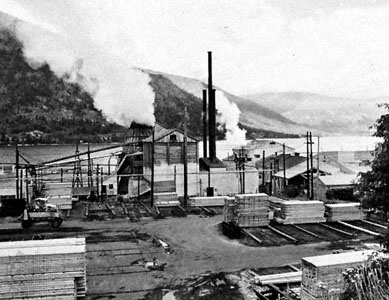Nelson
British Columbia, Canada
 city, southeastern British Columbia, Canada, on the western arm of Kootenay Lake, a few miles south of Kokanee Glacier Provincial Park and 408 miles (657 km) east of Vancouver. The discovery of gold at nearby Fortynine Creek in 1867 led to the development of several mines near Cottonwood Creek Delta, the original town site. Founded in 1887, the community was first known as Stanley or Salisbury. In 1888 it was renamed in honour of Hugh Nelson, then lieutenant governor of British Columbia.
city, southeastern British Columbia, Canada, on the western arm of Kootenay Lake, a few miles south of Kokanee Glacier Provincial Park and 408 miles (657 km) east of Vancouver. The discovery of gold at nearby Fortynine Creek in 1867 led to the development of several mines near Cottonwood Creek Delta, the original town site. Founded in 1887, the community was first known as Stanley or Salisbury. In 1888 it was renamed in honour of Hugh Nelson, then lieutenant governor of British Columbia.In 1907 Nelson became the first city in the province to undertake municipal hydroelectric development on the Kootenay River. It is now a service point for an extensive farming, lumbering, and mining area and is also the chief administrative centre for the Kootenay region. Industries include railroad repair shops, sawmills (sawmill), and transportation and communication utilities. The Kootenay Museum displays Indian flint and historical items of the Dukhobors (Dukhobor), who were members of a Russian religious sect that immigrated to western Canada at the end of the 19th century. Nelson has been the scene of the World's Midsummer Curling Bonspiel Championships since 1945 and is a base for fishing, hunting, skiing, and water sports. Inc. city, 1897. Pop. (2006) 9,258.
New Zealand
port city and unitary authority, northern South Island, New Zealand, on an inlet at the head of Tasman Bay, at the mouth of the Matai River. Settled by the New Zealand Company in 1842 and named for British admiral Lord Nelson (Nelson, Horatio Nelson, Viscount), it was delayed in its development by a Maori attack two years later. Declared a city and the seat of an Anglican bishopric in 1858, it prospered during the gold rush of the 1860s.
Nelson is a resort and retirement centre, particularly for people from Wellington, 103 miles (165 km) east, on the other side of Cook Strait. It serves a productive agricultural and livestock region; industries include food-processing plants, sawmills, and engineering works. The port exports tobacco, fruit, timber, and meat and imports petroleum products. In the city are an Anglican cathedral; the Suter Art Gallery (1895; rebuilt 1978); and the Cawthron Institute (1919), which conducts chemical, biological, and environmental research. Area 171 square miles (444 square km). Pop. (2006) 45,372.